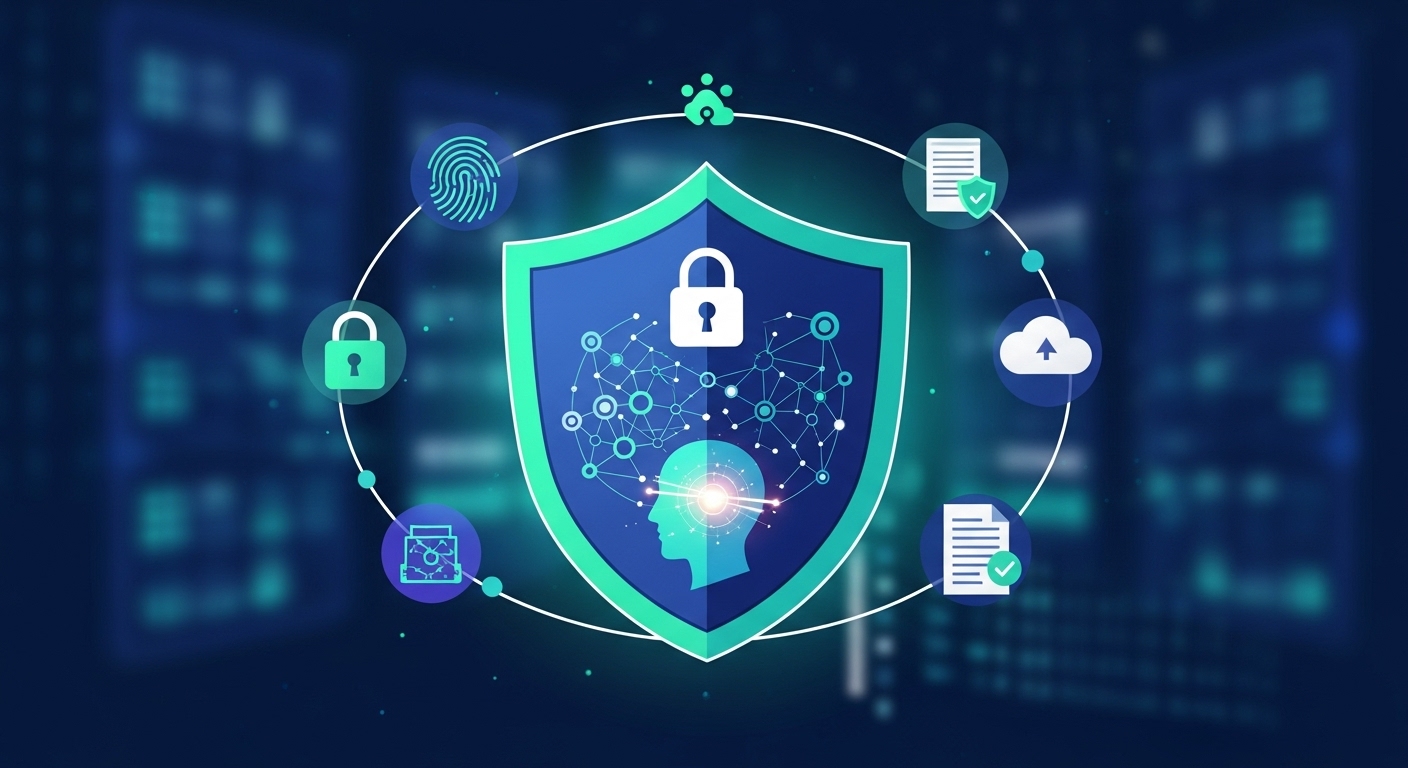Welcome to Your Digital Security Overhaul
In an age where our lives are intricately woven into the digital fabric, the concepts of data protection and online privacy have shifted from niche tech concerns to everyday essentials. Every click, share, and login contributes to your digital footprint. The question is, are you protecting it? It’s easy to feel overwhelmed by terms like ‘phishing,’ ‘malware,’ and ‘data breaches.’ But what if securing your online world was less about being a tech genius and more about adopting a few simple, powerful habits? That’s exactly what this guide is for. Forget the jargon; we’re providing a straightforward, step-by-step tutorial to empower you. This is one of those tutorials & guides that will fundamentally change how you interact with the internet for the better.
Mastering the Art of Strong Passwords
Your password is the front door to your digital home. A weak password is like leaving that door unlocked with a welcome mat out for intruders. Let’s make sure your digital doors are fortified with the best locks available.
Why ‘Password123’ Is a Digital Catastrophe
It’s tempting to use simple, memorable passwords like a pet’s name, a significant date, or the classic ‘password123’. However, hackers use sophisticated software that can guess these common passwords in seconds. Brute-force attacks run through millions of combinations, and dictionary attacks use common words and phrases. A weak password makes their job incredibly easy, putting your email, banking, and social media accounts at immediate risk.
The Anatomy of an Unbreakable Password
A truly strong password, or better yet, a passphrase, is your first line of defense. Here’s the formula for creating one:
- Length is Strength: Aim for at least 12-16 characters. The longer, the better.
- Mix It Up: Combine uppercase letters, lowercase letters, numbers, and symbols (e.g., !, @, #, $).
- Avoid the Obvious: Steer clear of personal information like your name, birthday, or address. Don’t use sequential numbers (1234) or keyboard patterns (qwerty).
- Think in Phrases: A great technique is to create a passphrase. Think of a random, memorable sentence like “My-3-Green-Cats-Love!Tuna” It’s long, complex, and easy for you to remember but nearly impossible for a machine to guess.
Introducing Your New Best Friend: The Password Manager
Remembering dozens of unique, complex passphrases is a monumental task. This is where a password manager comes in. These secure applications generate, store, and auto-fill incredibly strong, unique passwords for every site you use. You only need to remember one master password to access your vault. Popular options include Bitwarden, 1Password, and LastPass. Using one is a non-negotiable step for modern digital security.
Fortifying Your Accounts with Two-Factor Authentication (2FA)
Even the strongest password can be compromised. Two-Factor Authentication (2FA) adds a crucial second layer of security, ensuring that even if someone steals your password, they can’t access your account.
What is 2FA and How Does It Work?
2FA requires you to provide two different types of credentials to log in. The first is something you know (your password). The second is something you have (your phone) or something you are (your fingerprint). When you log in from a new device, after entering your password, you’ll be prompted to enter a temporary code sent to your phone or generated by an app. This simple step can block the vast majority of unauthorized access attempts.
Step-by-Step: Enabling 2FA on Your Key Accounts
Every major service offers 2FA. The process is generally similar:
- Log in to the account you want to secure (e.g., Google, Facebook, your bank).
- Navigate to the ‘Security’ or ‘Login Settings’ section.
- Look for an option labeled ‘Two-Factor Authentication,’ ‘2-Step Verification,’ or ‘Login Approvals.’
- Follow the on-screen instructions. You’ll typically be asked to link your phone number for SMS codes or scan a QR code with an authenticator app like Google Authenticator or Authy. We highly recommend using an authenticator app, as it is more secure than SMS.
- Enable it for all your critical accounts immediately: email, banking, social media, and password manager.
Recognizing and Dodging Phishing Scams
Phishing is a fraudulent attempt, usually made through email, to trick you into revealing sensitive information. Scammers pose as legitimate organizations to lure you into clicking malicious links or downloading infected attachments.
The Deceptive Lures: How to Spot a Phishing Email
Awareness is your best defense. Look for these common red flags:
- Sense of Urgency: Messages that create panic, like “Your account has been compromised, click here to fix it NOW!” or “You’ve won a prize, claim it in the next hour!”
- Suspicious Sender Address: Hover your mouse over the sender’s name to reveal the full email address. A legitimate email from PayPal won’t come from ‘[email protected]’.
- Generic Greetings: Phishing emails often use vague greetings like “Dear Valued Customer” instead of your actual name.
- Poor Grammar and Spelling: Professional companies usually have teams proofreading their communications. Obvious errors are a major warning sign.
- Unexpected Attachments or Links: If you weren’t expecting a file or a link from someone, do not open it. Hover over links to see the actual URL they lead to before clicking.
Securing Your Digital Footprint: Browsing and Social Media Privacy
Every day, you leave a trail of data across the internet. Taking control of this digital footprint is a key aspect of protecting your privacy.
Conducting a Social Media Privacy Audit
Social media platforms are designed for sharing, but you control what you share and with whom. Regularly perform a privacy check-up:
- Go into the privacy settings of each platform (Facebook, Instagram, X, etc.).
- Review who can see your posts, photos, and personal information. Set your default audience to ‘Friends’ instead of ‘Public.’
- Limit the information available on your public profile. Do strangers need to know your birthday or hometown?
- Review which third-party apps have access to your account and revoke permissions for any you no longer use or trust.
The Power of a VPN (Virtual Private Network)
When you use public Wi-Fi at a coffee shop or airport, your data can be vulnerable to snooping. A VPN encrypts your internet connection, creating a secure tunnel for your data. This makes it unreadable to anyone who might be trying to intercept it, protecting your browsing activity and personal information from prying eyes.
Keeping Your Software and Devices Updated
Those pesky update notifications are more than just an annoyance; they are a critical component of your security. Developers constantly release patches to fix security vulnerabilities that have been discovered in their software.
Why Software Updates Are Non-Negotiable
Hackers actively search for and exploit these known vulnerabilities in outdated software on your computer, phone, and even smart home devices. Running old software is like leaving a known, unlocked backdoor for criminals. By simply clicking ‘Update,’ you are patching those holes and keeping your defenses strong. Enable automatic updates wherever possible to ensure you’re always protected without having to think about it.
Take Control of Your Digital Security Today
Protecting your data and privacy online doesn’t require a degree in computer science. It requires awareness and the consistent application of a few fundamental practices. By creating strong, unique passphrases with a password manager, enabling 2FA on your critical accounts, learning to spot phishing scams, managing your privacy settings, and keeping your software updated, you build a formidable defense around your digital life. Don’t try to do everything at once. Pick one thing from this tutorial and implement it right now. Set up a password manager or enable 2FA on your primary email account. Each small step you take makes you significantly safer. Our goal with these tutorials & guides is to give you the confidence and knowledge to navigate the digital world securely. Start today, and turn your digital vulnerabilities into digital strengths.


